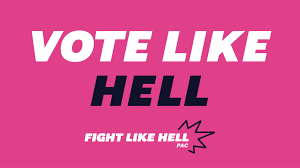The Fight Like Hell Documentary is more than just a film about the 2020 U.S. presidential election—it is a powerful examination of the political landscape during one of the most tumultuous periods in American history. At the heart of this documentary is Donald Trump, whose campaign rhetoric and post-election actions continue to shape the future of American politics. Through the lens of this documentary, viewers gain an unprecedented look at Trump’s unyielding resistance to his electoral defeat, his use of combative language, and the far-reaching consequences of his refusal to accept the results of the 2020 election.
In this article, we will delve into what the Fight Like Hell Documentary reveals about Trump—the man, the leader, and the political figure whose influence has left a lasting imprint on both the Republican Party and American democracy as a whole. If you want to fully understand the impact of Trump’s actions and words, I highly recommend watching the Fight Like Hell Documentary. You can view the film here: Fight Like Hell Documentary.
The Rhetoric of Resistance: A Key Insight into Trump’s Leadership
One of the most striking aspects of the Fight Like Hell Documentary is its focus on Trump’s unique and aggressive political rhetoric. Throughout his 2020 campaign, Trump continuously used combative language to rally his supporters. The phrase “Fight Like Hell” became more than just a slogan—it was a rallying cry that embodied his entire approach to politics. The documentary delves into how this rhetoric not only fueled his base but also helped to define his leadership style.
Trump’s use of this phrase highlighted his confrontational nature, rejecting compromise and consensus in favor of a more divisive, combative stance. The Fight Like Hell Documentary makes it clear that Trump’s messaging was designed to portray him as a fighter, someone who would not back down in the face of opposition. Whether addressing the media, political rivals, or even the courts, Trump repeatedly framed himself as a warrior fighting for the “silent majority” of Americans who he felt had been overlooked by the political establishment.
This combative language did not stop when Trump lost the 2020 election. Rather, it intensified, as he refused to accept the results and sought to discredit the election process. In the documentary, this rhetoric is shown as a powerful tool that both energized his supporters and contributed to the deep divisions in the country. Trump’s refusal to admit defeat and his insistence that the election was rigged are central themes throughout the film, providing a portrait of a leader whose sense of identity was closely tied to winning and fighting.
A Campaign Built on Defiance
Another key element the Fight Like Hell Documentary reveals about Trump is his deep reliance on defiance as a central component of his campaign strategy. Rather than presenting a vision for America in the post-election world, Trump embraced a posture of resistance—one that rejected not only the results of the 2020 election but also the legitimacy of the democratic system itself. The documentary highlights how Trump’s campaign post-election was characterized by his refusal to concede, and how he worked tirelessly to convince his supporters that the election was stolen.
The documentary explores Trump’s legal battles, his push to have Republican lawmakers overturn the results, and the ongoing “Stop the Steal” movement that he helped spark. His base, many of whom already viewed the system as rigged against them, embraced Trump’s narrative, seeing him as the only leader capable of standing up to the powers that be. Trump’s ability to maintain such a high level of loyalty and passion from his supporters in the face of defeat speaks volumes about the power of his message of resistance.
In addition to his refusal to concede, the Fight Like Hell Documentary illustrates how Trump used his influence and platform to perpetuate the idea of a “stolen” election. This defiance wasn’t just about pushing back against Biden’s victory—it was about fostering a larger sense of political resistance, where Trump positioned himself as a martyr and a symbol of opposition. The documentary paints a picture of a leader who viewed his fight not as an individual struggle, but as part of a much larger battle against a system he felt was inherently unjust.
The Capitol Insurrection: The Consequences of Trump’s Rhetoric
Perhaps the most powerful revelation in the Fight Like Hell Documentary is the direct link between Trump’s rhetoric and the January 6th Capitol insurrection. Throughout the documentary, the film traces how Trump’s repeated calls to “fight like hell” and his false claims of election fraud culminated in the violent storming of the U.S. Capitol by his supporters.
The documentary shows how the buildup to the insurrection was not just the result of isolated incidents, but the culmination of a sustained effort by Trump to delegitimize the election results. His rhetoric, amplified by social media and echoed by his supporters, reached a fever pitch leading up to January 6th. The film makes it clear that, for many of those involved in the attack on the Capitol, Trump’s words were not just motivational—they were a call to arms. The insurrectionists believed they were carrying out Trump’s will, fighting for what they saw as a stolen election and a corrupt system.
By providing behind-the-scenes footage and testimonies from key figures, the Fight Like Hell Documentary paints a chilling portrait of how Trump’s narrative of resistance pushed many of his supporters to engage in violent and dangerous actions. The documentary makes it impossible to ignore the fact that the insurrection was the extreme outcome of a political campaign that thrived on confrontation and defiance.
The aftermath of the insurrection, including Trump’s second impeachment and the ongoing investigations into his role in inciting the attack, is also explored in the documentary. The film raises significant questions about the responsibility of leaders who use incendiary rhetoric and whether they can be held accountable for the consequences of their words.
A Divided Nation: Trump’s Polarizing Influence
Beyond the immediate consequences of Trump’s rhetoric and actions, the Fight Like Hell Documentary provides a broader look at how his influence has continued to shape the American political landscape. The documentary explores the deep polarization that emerged during Trump’s presidency, fueled in no small part by his combative language and refusal to compromise.
Trump’s rhetoric often served to deepen the divide between his supporters and detractors. For his base, Trump’s defiance was seen as a virtue—an unwillingness to back down, no matter the cost. For his critics, it was a dangerous undermining of American institutions and democratic norms. The Fight Like Hell Documentary highlights how this divide has only grown since the 2020 election, with Trump’s supporters continuing to embrace the narrative of election fraud, while those opposed to him view his actions as a threat to the integrity of the country.
The documentary also addresses the lasting impact of Trump’s influence on the Republican Party. Despite his electoral loss, Trump’s political presence remains formidable, and his narrative of resistance has become deeply embedded within the party. From his ongoing influence over Republican candidates to his continued prominence in conservative media, Trump’s legacy is still very much alive. The Fight Like Hell Documentary explores how the party has evolved under Trump’s leadership, with many Republicans adopting his combative, anti-establishment approach to politics.
The Role of the Media: Amplifying Trump’s Message
The Fight Like Hell Documentary also reveals the crucial role the media played in amplifying Trump’s message. From his time as a reality TV star to his presidency and beyond, Trump has understood the power of media to shape public perception. The documentary highlights how Trump used both traditional media outlets and social media platforms to spread his message of defiance, using them as tools to rally his supporters and challenge his opponents.
Trump’s ability to dominate the media landscape, whether through Twitter, rallies, or interviews, is a central theme of the documentary. His use of media helped him maintain his presence in the public eye, even when he was no longer officially in power. The Fight Like Hell Documentary sheds light on how Trump was able to keep his narrative alive and relevant in the months following the election, ensuring that his brand of resistance continued to dominate the political conversation.
Conclusion: Understanding the Legacy of Trump’s “Fight Like Hell”
In conclusion, the Fight Like Hell Documentary offers a profound and detailed exploration of Donald Trump’s political journey, focusing on his rhetoric, resistance, and the lasting impact of his actions on American democracy. From his combative language to his refusal to concede defeat, Trump’s leadership style is defined by defiance, confrontation, and a willingness to challenge the system at all costs. The documentary provides critical insights into how Trump’s words and actions mobilized millions of Americans, leading to one of the most intense and divisive political periods in modern history.
For those seeking to understand the complex legacy of Trump and his impact on American politics, the Fight Like Hell Documentary is an essential viewing experience. To fully appreciate the nuances of this pivotal moment in history, I highly recommend watching the documentary. You can view it here: Fight Like Hell .
By watching the Fight Like Hell Documentary, viewers can gain a deeper understanding of the forces that shaped Trump’s presidency, his post-election resistance, and the ongoing effects of his political narrative. It is a powerful reminder of how language, leadership, and rhetoric can shape the course of history—and the price that can be paid when those in power refuse to back down.


